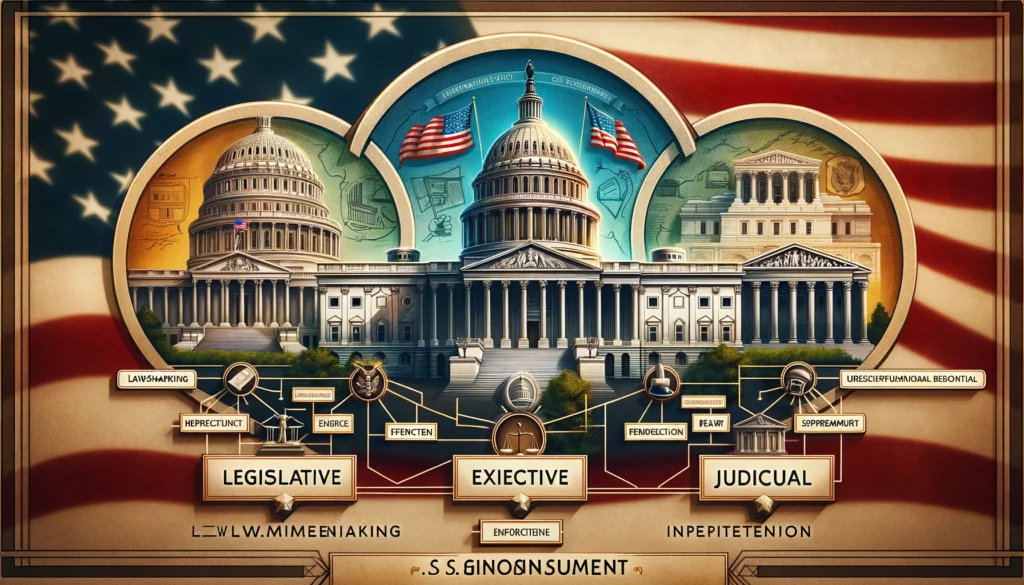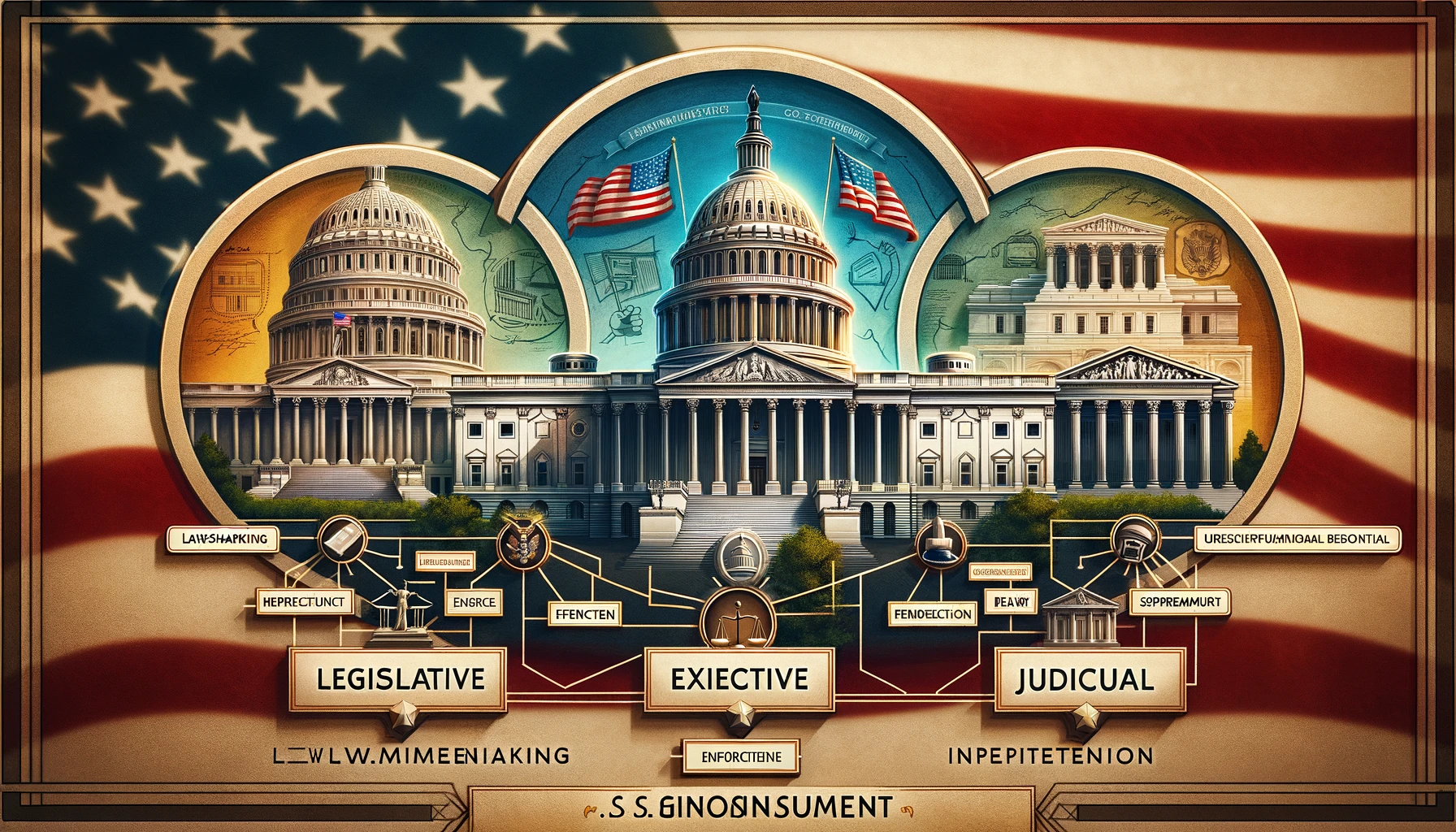The federal government of the United States is a complex and multifaceted institution that plays a critical role in the governance and functioning of the country. Understanding its structure, roles, and functions is essential for comprehending how policies are formulated, laws are enforced, and services are delivered to the public. This blog post aims to provide a comprehensive overview of the federal government’s structure, its various roles, and the functions it performs.

The Structure of the Federal Government
The federal government is divided into three branches: the Legislative, Executive, and Judicial branches. Each branch has distinct powers and responsibilities, creating a system of checks and balances designed to prevent any one branch from becoming too powerful.
1. The Legislative Branch
The Legislative Branch, composed of the Senate and the House of Representatives, is responsible for making laws. This branch is also known as Congress.
- Senate: The Senate consists of 100 senators, two from each state, serving six-year terms. Senators represent the interests of their entire state.
- House of Representatives: The House has 435 members, with the number of representatives from each state determined by its population. Representatives serve two-year terms and represent specific districts within their states.
Congress has several vital functions, including:
- Drafting and passing legislation
- Approving the federal budget
- Declaring war
- Confirming presidential appointments (Senate only)
- Impeaching and removing federal officials (House impeaches, Senate tries)
2. The Executive Branch
The Executive branch is headed by the President of the United States, who serves as both the head of state and the head of government. The Vice President, the Cabinet, and numerous federal agencies support the President.
Key responsibilities of the Executive Branch include:
- Enforcing federal laws
- Commanding the armed forces
- Conducting foreign policy
- Appointing federal officials and judges
- Vetoing or signing bills into law
The President’s Cabinet consists of the heads of 15 executive departments, such as the Department of Defense, Department of Education, and Department of Health and Human Services. These departments implement and administer federal policies and programs.
3. The Judicial Branch
The Judicial Branch interprets and applies the law through the court system. The Supreme Court heads it, the highest court in the land, which has nine justices appointed by the President and confirmed by the Senate.
The federal judiciary also includes:
- U.S. Courts of Appeals: These courts review cases appealed from lower courts. There are 13 appellate courts, each covering a specific geographical area.
- U.S. District Courts: These are the trial courts where most federal cases begin. There are 94 district courts across the states and territories.
The primary function of the Judicial Branch is to ensure that laws are consistent with the Constitution and to resolve disputes that arise under federal law.
Roles of the Federal Government
The federal government has various roles that are critical to the nation’s stability and growth. These roles can be broadly categorized into regulatory, protective, administrative, and welfare functions.
Regulatory Role
The federal government regulates a wide range of activities to ensure fair practices and protect public interests. This includes:
- Economic Regulation: Agencies like the Securities and Exchange Commission (SEC) oversee financial markets, while the Federal Trade Commission (FTC) enforces antitrust laws.
- Environmental Regulation: The Environmental Protection Agency (EPA) sets and enforces standards to protect air and water quality.
- Workplace Regulation: The Occupational Safety and Health Administration (OSHA) ensures safe working conditions.
Protective Role
One of the fundamental roles of the federal government is to protect its citizens. This involves:
- National Defense: Maintaining armed forces to defend against external threats.
- Law Enforcement: Agencies like the Federal Bureau of Investigation (FBI) and the Department of Homeland Security (DHS) work to protect against internal threats, including terrorism and cyber-attacks.
- Disaster Response: The Federal Emergency Management Agency (FEMA) coordinates responses to natural and artificial disasters.
Administrative Role
The federal government is responsible for administering a vast array of public services and infrastructure projects, including:
- Transportation: The Department of Transportation oversees federal highways, air traffic control, and public transit systems.
- Communication: The Federal Communications Commission (FCC) regulates interstate and international communications by radio, television, wire, satellite, and cable.
- Energy: The Department of Energy oversees the nation’s energy policies and nuclear safety.
Welfare Role
Ensuring the welfare of its citizens is a vital function of the federal government, which it accomplishes through various programs and initiatives:
- Social Security: Provides financial assistance to retirees, disabled individuals, and survivors of deceased workers.
- Medicare and Medicaid: These programs provide health care coverage to the elderly, disabled, and low-income individuals.
- Education: The Department of Education provides funding and oversight to support public education and administers federal student aid programs.
Functions of the Federal Government
The federal government performs a multitude of functions aimed at maintaining the nation’s stability and promoting the well-being of its citizens. These functions can be summarized into three main categories: legislative, executive, and judicial functions.
Legislative Functions
- Law Making: Congress drafts, debates, and passes laws that govern the country.
- Budgeting: Congress controls the federal purse strings, deciding how much money can be spent and on what.
- Oversight: Congress monitors the activities of the executive branch to ensure compliance with the law.
Executive Functions
- Implementation: The executive branch implements and enforces laws passed by Congress.
- Policy Making: The President sets national policy priorities and directs the executive departments in achieving these goals.
- Administration: Federal agencies administer programs and deliver services to the public.
Judicial Functions
- Adjudication: Federal courts adjudicate disputes involving federal laws and the Constitution.
- Interpretation: Courts interpret the meaning and application of laws and the Constitution.
- Review: The judiciary reviews the actions of the executive and legislative branches to ensure they are constitutional.
Understanding Federal Government Roles and Functions
Federal Government: Key Roles and Functions Explained
The federal government is a cornerstone of the nation’s governance, playing vital roles in regulation, protection, administration, and welfare. Understanding these roles helps citizens appreciate how the government impacts daily life and national stability.
Regulatory Role
The federal government’s regulatory function ensures that economic, environmental, and workplace standards are maintained. Agencies like the SEC, EPA, and OSHA oversee these areas, ensuring fair practices and protecting public interests.
Protective Role
From national defense to law enforcement and disaster response, the federal government safeguards its citizens. Agencies such as the FBI, DHS, and FEMA are integral in these protective functions.
Administrative Role
The administrative role encompasses public services and infrastructure. The Department of Transportation, FCC, and Department of Energy manage transportation, communication, and energy policies, respectively, ensuring smooth and efficient operations.
Welfare Role
The welfare function includes social programs like Social Security, Medicare, and Medicaid, as well as education initiatives. These programs provide financial assistance, healthcare, and educational support to enhance citizens’ quality of life.
By grasping the structure and roles of the federal government, citizens can better understand its impact on their lives and the nation’s overall functioning. This knowledge fosters informed participation in civic duties and promotes a deeper appreciation for the complexities of governance.
Conclusion
The federal government of the United States, with its three branches, performs a wide array of roles and functions essential to the country’s operation and well-being. From making and enforcing laws to regulating industries and providing public services, the federal government is a pivotal institution that impacts every aspect of American life. Understanding its structure, roles, and functions helps citizens engage more effectively in the democratic process and appreciate the complexities of governance.

